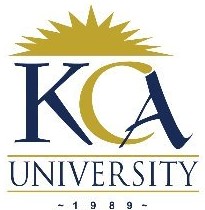 UNIVERSITY EXAMINATIONS: 2012/2013
UNIVERSITY EXAMINATIONS: 2012/2013
SECOND YEAR EXAMINATION FOR THE BACHELOR OF
SCIENCE IN INFORMATION TECHNOLOGY
BIT 2205BIT 2311 NETWORK SYSTEMS ADMINISTRATION
DATE: DECEMBER, 2012 TIME: 2 HOURS
INSTRUCTIONS: Answer Question ONE and any other TWO
QUESTION ONE
a) State any five reasons, which necessitated the OSI reference model to be
developed. (5 Marks)
b) State any five factors that push the demand for more bandwidth on a network.
(5 Marks)
c) Differentiate between:
i. Distance-vector and link-state protocols (2 Marks)
ii. Digital bandwidth and throughput (2 Marks)
d) Give the functions or applications of the following network troubleshooting
commands
i. hostname (1 Mark)
ii. ipconfig /all (1 Mark)
iii. ping (1 Mark)
iv. tracert (1 Mark)
v. nslookup (1 Mark)
e) Explain any five routing metrics used by routing protocols to determine the best
path for a packet. (5 Marks)
f) As systems become increasingly distributed, cheaper, and innovative, greater
focus has been placed on strategically arranging them using effective network
design practices to ensure survivability and performance. Strategies and practices
used in the past to deliver survivable and well-performing networks are being
revised in light of more recent IT trends and world events.
i. When designing a LAN, discuss why it is necessary to consider the concept of
Network Continuity (3 Marks)
ii. Discuss the concept of disaster recovery (3 Marks)
QUESTION TWO
a) Describe four guidelines for creating effective network documentation (4 Marks)
b) Discuss the stages involved when gathering symptoms for a network problem.
(5 Marks)
c) Discuss any four typical considerations for setting up a remote-site WAN
connection. (8 Marks)
d) What are the major issues with non-hierarchical networks? (3 Marks)
QUESTION THREE
a) Describe any four benefits of a VoIP network (4 Marks)
b) More and more companies are finding it beneficial to have teleworkers. With
advances in broadband and wireless technologies, working away from the office
no longer presents the challenges it did in the past.
i. Describe any four benefits of the teleworker solution. (4 Marks)
ii. Teleworkers typically use diverse applications (for example, e-mail, web-based
applications, mission-critical applications, real-time collaboration, voice, video,
and videoconferencing) that require a high-bandwidth connection. Describe any
four infrastructure services options that are available. (4 Marks)
c) The following questions refer to Wireless LANs (WLANs)
i. What are the 3 non-overlapping channels available in 802.11b/g? (1 Mark)
ii. Which standards operate in the 2.4-GHz band? (2 Marks)
iii. What frequency band does 802.11a operate in? (1 Mark)
iv. Which standards offer data rates of up to 54Mbps? (2 Marks)
v. What is data rate shifting? (2 Marks)
QUESTION FOUR
a) You have been assigned the task of installing a NIC and ensuring that it operates
properly.
i. What should you disable when installing a new driver? (1 Mark)
ii. What is a best practice to follow when installing a driver? (1 Mark)
iii. Why should you reboot after installing a driver? (2 Marks)
iv. What must all NICs be configured with in order to participate on the network?
(3 Marks)
b) Explain any three costs that can be attributed to poor cabling: (6Marks) 6 Marks
c) List any five factors that determine throughput of a network. (5 Marks)
d) Explain briefly two features offered by SANs (2 Marks)
QUESTION FIVE
a) State the port numbers for each of the following protocols
i. HTTP (1 Mark)
ii. Telnet (1 Mark)
iii. FTP (1 Mark)
iv. DNS (1 Mark)
v. SMTP (1 Mark)
b) With the aid of a sketch describe the stages of the general troubleshooting process
(7 Marks)
c) Describe the procedure to be followed when creating a crossover patch cable.
(8 Marks)